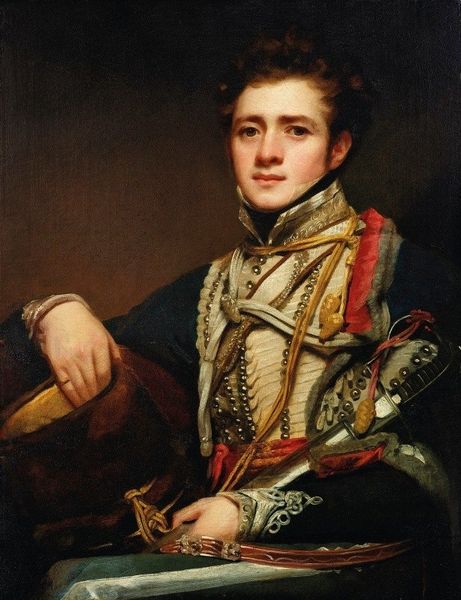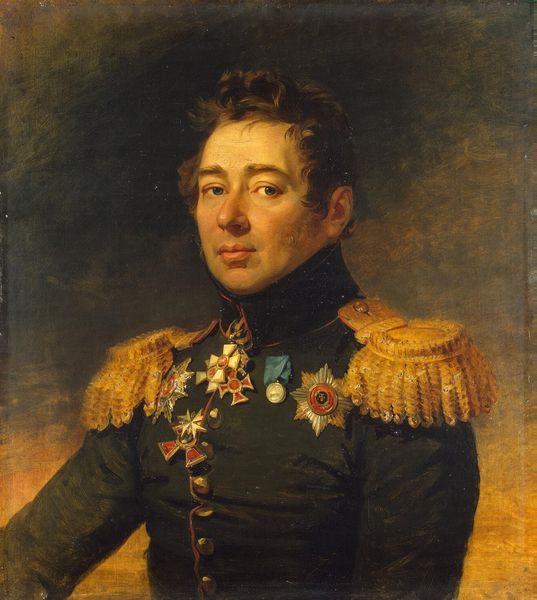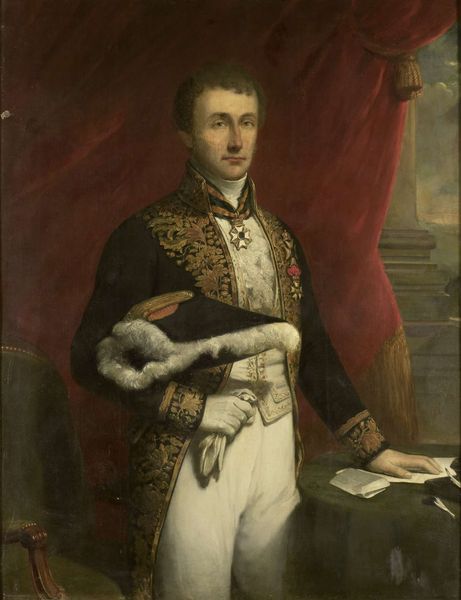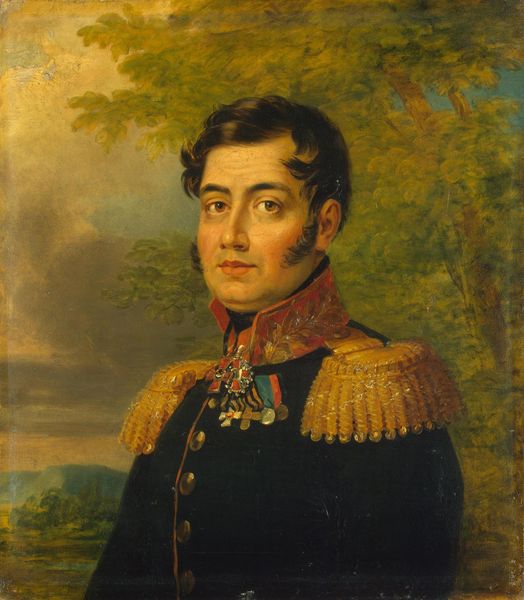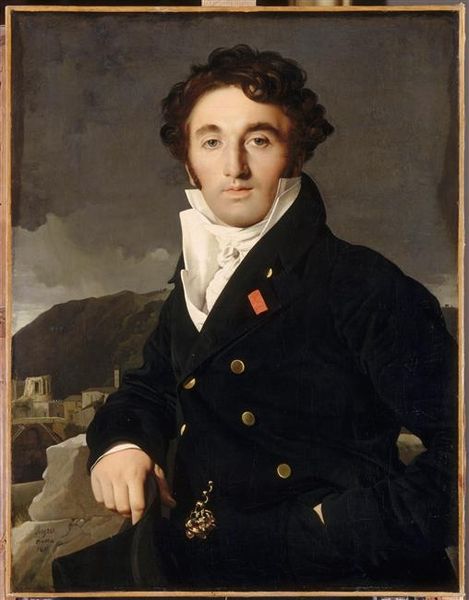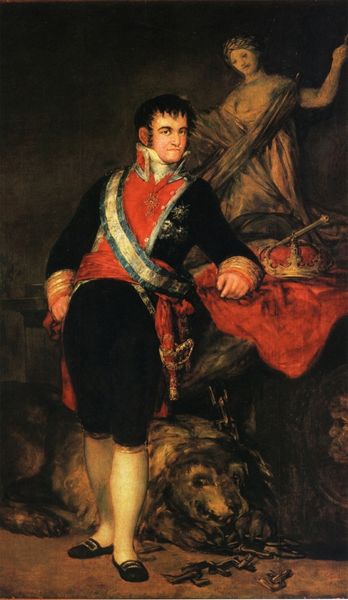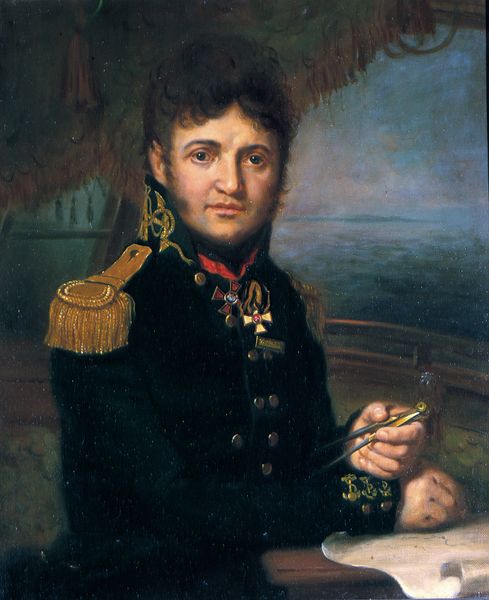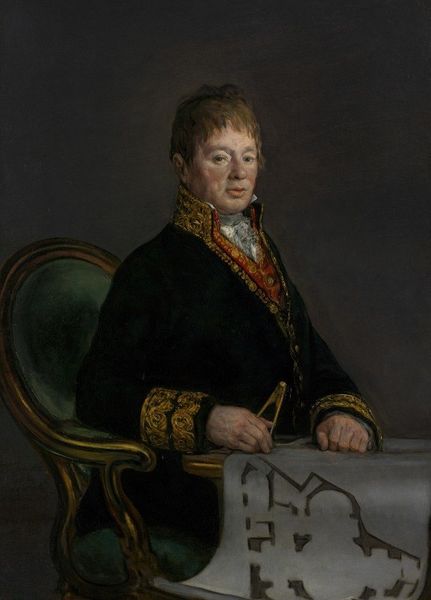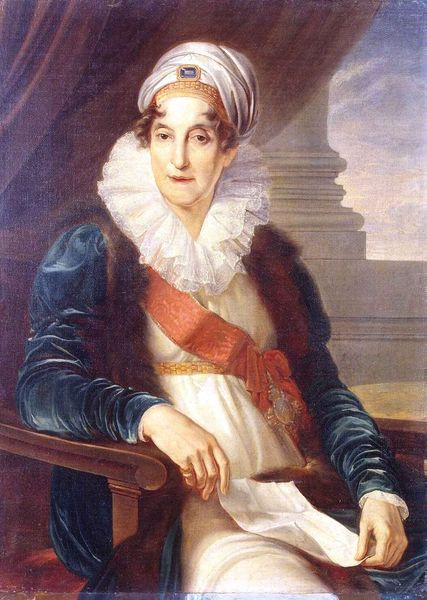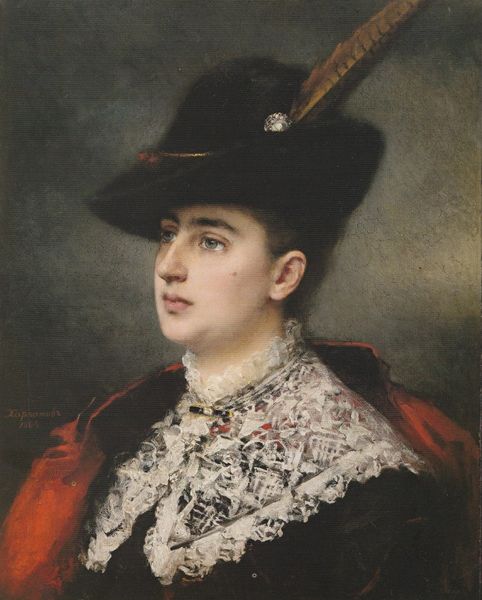
painting, oil-paint
#
portrait
#
painting
#
oil-paint
#
figuration
#
romanticism
#
history-painting
#
academic-art
Dimensions: 186 x 124 cm
Copyright: Public domain
Curator: Before us hangs Francisco de Goya's "Portrait of Ferdinand Guillemardet," completed in 1798. Editor: It's remarkably dark, almost melancholic. The figure seems both present and strangely distant, cloaked in a shadowy, almost oppressive, atmosphere. Curator: The painting reflects the shifting social landscape of late 18th-century Spain, particularly the influence of French revolutionary ideals and the complex political relationship between Spain and France. Guillemardet was, in fact, the French ambassador to Spain during a turbulent period. Editor: That explains the French Revolutionary symbols so prominently displayed: the tricolor cockade on the table, echoing in the sash around his waist. The careful arrangement of these colors—the calculated dispersal of red, white, and blue—contributes to a visually arresting sense of contained energy. Curator: Goya uses this symbolism not just as representation, but as a lens through which to view the man himself and the intersection of revolutionary fervor and diplomatic duty, given that Guillemardet, while an ambassador, was also considered something of a radical. He championed revolutionary principles at the Spanish court. Editor: His hand...the way he clutches the chair. It adds to the underlying tension—a visual anchor within the composition that subtly conveys a sense of unease or perhaps even a suppressed force. I note the dark palette broken only by the gold in his sash and sword, creating highlights that demand attention. Curator: Consider the social position represented. Ambassadors mediated culture and political power, yet were subject to their government. We’re prompted to think about class, allegiance, the burden of history. Editor: Precisely. It transcends simple portraiture, engaging with the semiotics of power through sartorial codes. The somber tones amplify a quiet internal struggle. It’s wonderfully wrought. Curator: Goya successfully captured that liminal space between diplomacy and revolution and hints to the political intricacies of the era. Editor: I leave feeling as if I know this character just from the visual evidence, while having been offered many socio-political perspectives, too.
Comments
No comments
Be the first to comment and join the conversation on the ultimate creative platform.
